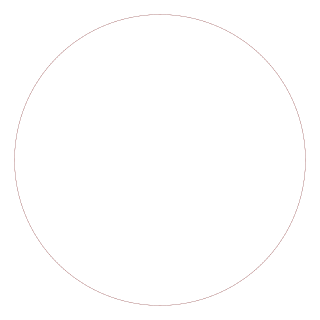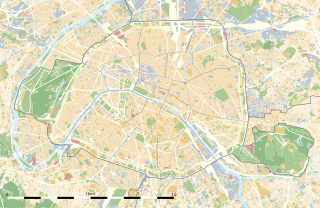
Cogito, ergo sum is a Latin philosophical proposition by René Descartes usually translated into English as "I think, therefore I am". The phrase originally appeared in French as je pense, donc je suis in his Discourse on the Method, so as to reach a wider audience than Latin would have allowed. It appeared in Latin in his later Principles of Philosophy. As Descartes explained, "we cannot doubt of our existence while we doubt...." A fuller version, articulated by Antoine Léonard Thomas, aptly captures Descartes's intent: dubito, ergo cogito, ergo sum. The concept is also sometimes known as the cogito.

René Descartes was a French philosopher, mathematician, and scientist. A native of the Kingdom of France, he spent about 20 years (1629–1649) of his life in the Dutch Republic after serving for a while in the Dutch States Army of Maurice of Nassau, Prince of Orange and the Stadtholder of the United Provinces. One of the most notable intellectual figures of the Dutch Golden Age, Descartes is also widely regarded as one of the founders of modern philosophy.
In philosophy, rationalism is the epistemological view that "regards reason as the chief source and test of knowledge" or "any view appealing to reason as a source of knowledge or justification". More formally, rationalism is defined as a methodology or a theory "in which the criterion of the truth is not sensory but intellectual and deductive".

Marin Mersenne, Marin Mersennus or le PèreMersenne was a French polymath, whose works touched a wide variety of fields. He is perhaps best known today among mathematicians for Mersenne prime numbers, those which can be written in the form Mn = 2n − 1 for some integer n. He also developed Mersenne's laws, which describe the harmonics of a vibrating string, and his seminal work on music theory, Harmonie universelle, for which he is referred to as the "father of acoustics". Mersenne, an ordained priest, had many contacts in the scientific world and has been called "the center of the world of science and mathematics during the first half of the 1600s" and, because of his ability to make connections between people and ideas, "the post-box of Europe". He was also a member of the Minim religious order and wrote and lectured on theology and philosophy.

Discourse on the Method of Rightly Conducting One's Reason and of Seeking Truth in the Sciences is a philosophical and autobiographical treatise published by René Descartes in 1637. It is best known as the source of the famous quotation "Je pense, donc je suis", which occurs in Part IV of the work. A similar argument, without this precise wording, is found in Meditations on First Philosophy (1641), and a Latin version of the same statement Cogito, ergo sum is found in Principles of Philosophy (1644).

Meditations on First Philosophy, in which the existence of God and the immortality of the soul are demonstrated is a philosophical treatise by René Descartes first published in Latin in 1641. The French translation was published in 1647 as Méditations Métaphysiques. The title may contain a misreading by the printer, mistaking animae immortalitas for animae immaterialitas, as suspected by A. Baillet.

In geometry, a chiliagon or 1000-gon is a polygon with 1,000 sides. Philosophers commonly refer to chiliagons to illustrate ideas about the nature and workings of thought, meaning, and mental representation.

The evil demon, also known as malicious demon and evil genius, is a concept in Cartesian philosophy. In the first of his 1641 Meditations on First Philosophy, Descartes imagines that an evil demon, of "utmost power and cunning has employed all his energies in order to deceive me." This evil demon is imagined to present a complete illusion of an external world, so that Descartes can say, "I shall think that the sky, the air, the earth, colours, shapes, sounds and all external things are merely the delusions of dreams which he has devised to ensnare my judgement. I shall consider myself as not having hands or eyes, or flesh, or blood or senses, but as falsely believing that I have all these things."

Descartes is a heavily worn lunar impact crater that is located in the rugged south-central highlands of the Moon. To the southwest is the crater Abulfeda. It is named after the French philosopher, mathematician and physicist René Descartes.

Descartes is a commune in the Indre-et-Loire department in central France. It is approximately 13 miles east of Richelieu and about 24 miles east of Loudun, on the banks of the Creuse River.

In geometry, the folium of Descartes is an algebraic curve defined by the equation
René Descartes (1596–1650) was a French mathematician and philosopher.

Paris Descartes University, also known as Paris V, was a French public research university located in Paris.

The trademark argument is an a priori argument for the existence of God developed by French philosopher and mathematician, René Descartes.
Mechanical explanations of gravitation are attempts to explain the action of gravity by aid of basic mechanical processes, such as pressure forces caused by pushes, without the use of any action at a distance. These theories were developed from the 16th until the 19th century in connection with the aether. However, such models are no longer regarded as viable theories within the mainstream scientific community and general relativity is now the standard model to describe gravitation without the use of actions at a distance. Modern "quantum gravity" hypotheses also attempt to describe gravity by more fundamental processes such as particle fields, but they are not based on classical mechanics.
The "General Scholium" is an essay written by Isaac Newton, appended to his work of Philosophiæ Naturalis Principia Mathematica, known as the Principia. It was first published with the second (1713) edition of the Principia and reappeared with some additions and modifications on the third (1726) edition. It is best known for the "Hypotheses non fingo" expression, which Newton used as a response to some of the criticism received after the release of the first edition (1687). In the essay Newton not only counters the natural philosophy of René Descartes and Gottfried Leibniz, but also addresses issues of scientific methodology, theology, and metaphysics.

The Cartesian Method is the philosophical and scientific system of René Descartes and its subsequent development by other seventeenth century thinkers, most notably François Poullain de la Barre, Nicolas Malebranche and Baruch Spinoza. Descartes is often regarded as the first thinker to emphasize the use of reason to develop the natural sciences. For him, the philosophy was a thinking system that embodied all knowledge, and expressed it in this way:

Cartesian doubt is a form of methodological skepticism associated with the writings and methodology of René Descartes. Cartesian doubt is also known as:Cartesian skepticism, methodic doubt, methodological skepticism, universal doubt, systematic doubt, or hyperbolic doubt.
In the fields of epistemology and philosophy of mind, a person has privileged access to their own thoughts. This implies the subject has access to, and knows, their own thoughts in such a way that others do not. Privileged access can be characterized in two ways:

Common sense is sound practical judgment concerning everyday matters, or a basic ability to perceive, understand, and judge that is shared by nearly all people. The first type of common sense, good sense, can be described as "the knack for seeing things as they are, and doing things as they ought to be done". The second type is sometimes described as folk wisdom, "signifying unreflective knowledge not reliant on specialized training or deliberative thought". The two types are intertwined, as the person who has common sense is in touch with common-sense ideas, which emerge from the lived experiences of those commonsensical enough to perceive them.









